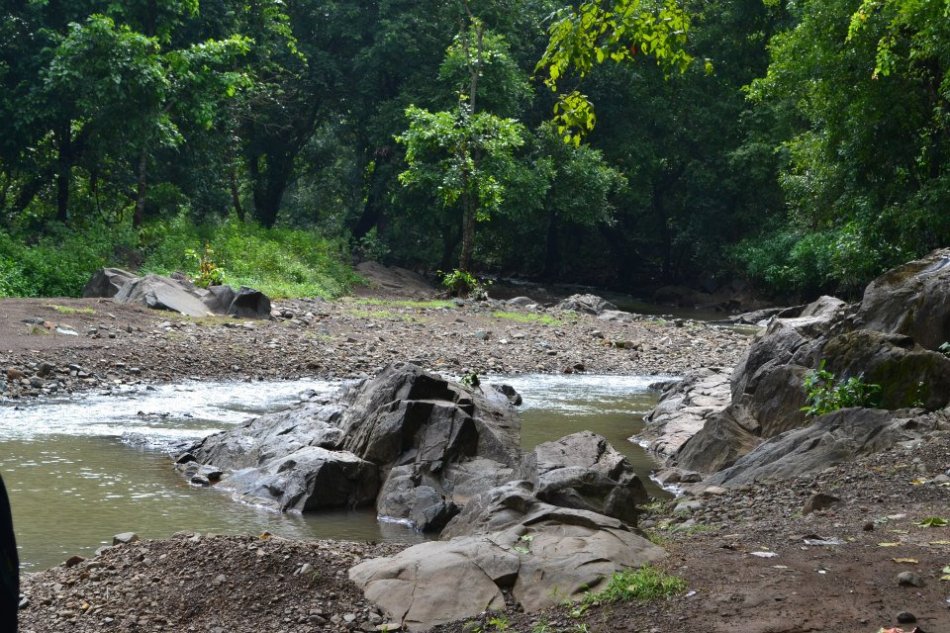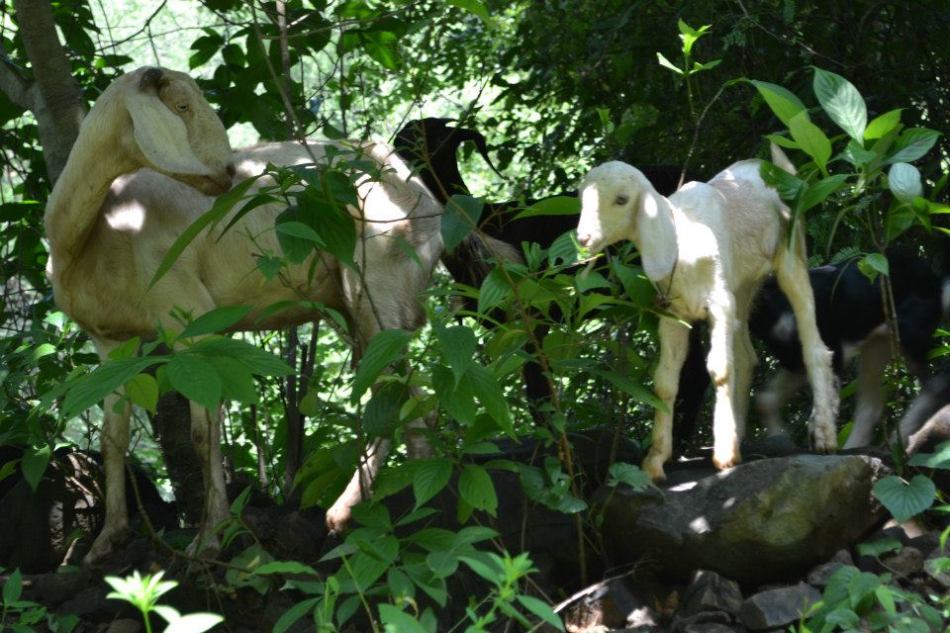Millions loved him
Millions admired him
He gave
Juvenile a new look
And romance a new face
That Rajesh Khanna joins
destiny’s ultimate pace
His amiable smile and bright eyes
had assured us a hero never dies
Though you have gone
but a great job you’ve done
that
those who were dejected and at variance
you show them floral beauty and fragrance
Be it a matter of three hours only but
it bolstered many who were lonely…
I hope
You will come again among us
With a new face and on newer dusk..!
By
Bharat Mehru
Dialogues, which created treasured moments…
‘Babumoshai, zindagi aur maut uparwale ke haath hai jahanpanah. Usse na toh aap badal sakte hain na main. Hum sab toh rangmanch ki kathputhliyan hain jinki dor uparwale ki ungliyon main bandhi hain. Kab, kaun, kaise uthega yeh koi nahi bata sakta hai. Ha, ha, ha.’
‘Zindagi Badi Honi Chahiye, Lambi Nahi Babu Moshai’
‘Maine tumse kitni baar kaha hai Pushpa, mujhse yeh aansoo nahi dekhe jaate. I hate tears.’
He gave a new meaning to expressions…
Rodney Dangerfield, an actor once said, “Acting deals with very delicate emotions. It is not putting up a mask. Each time an actor acts, he does not hide; he exposes himself.”
His expressions secretly depict his life story, which is said and narrated a number of times but yet not understood.
To understand the charm of Rajesh Khanna, was something totally out my reach but it was the year 2003, when Karan Johar’s film ‘Kal Ho Na Ho’ was on its way to release. This was the first time when I heard about ‘Anand’, Rajesh Khanna’s epic film. In an interview, Karan Johar was asked, whether he has taken the script of his film from ‘Anand’. To this, he answered “it would be a privilege to call my film, remake of ‘Anand’, but I don’t think I have even touched the eminence of Kaka’s film”. This was the time when my curiosity to know about the actor started with the notion that how can an actor be more awesome than Shahrukh Khan!
With the coming of audio films, era of silent films came to an end. Dialogues here played a significant role and became the key to success for these films. Writers often try their level best to write powerful/ effective dialogues but one cannot forget that an actor is the one who makes these dialogues classic. Rajesh Khanna, the first superstar of India was among those who changed the face of Bollywood cinema with his influential dialogues and his trademark expressions.
According to Readers Pick of Rediff Movies, ‘Wolf-whistle moments are made of dialogues especially when conveyed by a proud, unwavering Rajesh Khanna. With his head slightly tilted, nodding on cue, smiling or sombre and a voice that felt like a mix of velvet, mint and silver, Rajesh Khanna produced some of the most effective lines of his career.’
Today when he is not among us, the only thing that can give a glimpse of Rajesh Khanna, is his movies and a critical observation also allow you to see his characteristics. ‘Anand’, a movie that, created a hallmark in his career also gives you a slight hint of Rajesh Khanna’s background. Here in this movie, he is an orphanage, victim of partition (lost his parents) which is very similar to his own story.
Jatin Arora (earlier name) was the man who could bring his audience into his character’s world. His birth is a bit controversial because it is not clear enough where was he born. It is assumed by Indians that he was born in Amritsar but according to his followers in Pakistan who gathered near a house in the sleepy town of Burewala near Faisalabad, paying tributes to the departed actor at a place where they say he was born in 1942 in December. (Mentioned in an article, ‘Pakistan town says Rajesh Khanna was born there’, Times of India, dated July, 20, 2012) He was adopted and raised by his foster parents – Chunni Lal Khanna and his wife Leela Wati Khanna after his father migrated to the holy city, Amritsar. This detail of migration puts weight on the succeeding aspect. His foster parents were the relatives of his biological parents. There is no detail of his biological parents, what led to the adoption? These are the questions, which remains unanswered about his life. However, it gives a hint about his personality. Can this be the reason behind his ability to bring so much of emotions in his acting?
According to an article of Ndtv movies ‘In birthplace Amritsar, relatives remember Rajesh Khanna’, foster brother of RK said here, “He used to love to play cricket when he lived here. He was a simple boy when he lived here and led a simple life even after achieving so much”.
The word migration seems to be constant when it comes to Kaka’s life. His foster parents migrated to Saraswati Niwasin Thakurdwar near Girgaon, Mumbai. He studied at Sebastian’s Goan High School, Hill Grange High School and passed out in 1959. Later he went to Wadia College of Pune for two years for his bachelors but ended up in KC College. Every individual is born with some talent and it starts flourishing when given an opportunity. Khanna progressively started giving attention in theatre and did a lot of stage and theatre plays in his school and during college days and won many prizes in competitions.
Before joining the film industry, his uncle changed his name from Jatin to Rajesh, love and affection from his friends and relatives gave him the title, ‘Kaka’. In an article of Times of India, ‘Rajesh Khanna’s lesser known facts’, July 18, 2012, an interesting point comes out, which says that ‘his foster father initially didn’t approve of his foray into films.’
He was a rare and yet strange newcomer who used to go to theatre and studios in his MG Sports car. The most normal way of looking at this aspect is, he came from a strong financial background but there is another psychology behind using sports car. According to personality theories, people who are fond of sports cars are risk takers and showy.
People like Rajesh Khanna really sets examples for how talent hunts are efficient in finding talents. His path towards bollywood was visible when he won the All India Talent Contest organised by Filmfare and United Producers, and acted in Chetan Anand’s Aakhri Khat the very next year.
Most of the big stars of bollywood could not do very well in their initial period for example Amitabh Bachchan, Shammi Kapoor, Shahrukh Khan etc. Likewise Kaka’s actual stardom started after his romantic film ‘Aradhana’.
To understand a movie actor, it becomes very important to have an overview of his or her movies. In a way, it defines their view of the world. Like in case of present day leading stars, Aamir and Salman do completely different genre of films. Rajesh Khanna did 163 feature films of which in 128 films, he played the role of lead protagonist and he appeared in 17 short films. Films that an actor does act as an image in front of the public. It is entirely on an actor to choose the kind of movies he or she wants to do, based on their comfort zone, where they want to be and this is the reason why one becomes a superstar and others do not.
When you look at his movies, specially the continuous 15 hits that he gave, starting from ‘Ittefak’, where he his playing the role of Dilip Roy, a painter ,who is being tried for murdering his wife.
Moving towards ‘Aradhana’, here he had played the role of an air force officer. Smart, Handsome, Dashing, good-looking guy. In other words a “Man in uniform” is considered the most elegant, well mannered and chivalrous.
In ‘Kati Patang’, he is the one who falls in love with a woman who is seen as an imposter in the society but Rajesh Khanna falls in love with her.
‘Sachha Jhutha’ is a film where Rajesh Khanna is an innocent villager but gets into trouble because he looks very similar to a crook.
‘Anand’ is the movie that can force anyone to fall in love with Kaka. Here he is a man who doesn’t have any family, lover left him, got married and saddest of all is he is suffering from incurable cancer but despite all this he is full of life and values the importance of it. He is very helpful and caring but one cannot run away from the destiny and he ultimately dies.
Bollywood is known for making animal affectionate movies and when Rajesh Khanna featured in ‘Hathhi Mere Sathhi’, he became the favourite of children.
Similarly when you look at ‘Amar Prem’ and ‘Bawarchi’ and so many others one can feel a very positive vibrant. However bollywood follows a similar pattern and entirely focuses on entertainment. Rajesh Khanna chose to do movies that focused on breaking the cultural norm of bollywood and yet entertained. (Like falling in love with a servant, falling for a women who is seen as imposter etc)
The way he brought romance on screen, the chemistry that he built with his co-actors is rarely seen in any films even today. It was so natural that millions of girls went crazy for him. This ability does not just come within an actor just for the sake of it; it comes from personal life experience to some extent. Love was not just a major part of his life but it was an unstable part that was never stable and even after his death, his love life is surrounded by controversies.
‘Anju Mahendru – Why She Broke in to Tears for Rajesh Khanna’, an article on SeventyMM.com, talks about Kaka’s very first affair with Anju Mahendru, and says, ‘Rajesh Khanna dated actress Anju Mahendru for around seven years. They broke up in 1972 since, apparently, Mahendru wasn’t ready for marriage. Anju Mahendru, who broke in to tears while Kaka was cremated. There are rumors that when Kaka died his hand was in Anju Mahendru’s hands. However, have you given it a thought why Anju was so concerned about Kaka? It’s because she was his old lady love. Rajesh Khanna and Anju Mahendru were in relationship for 7 long years, but, they were not able to convert this long courtship into a lifelong relationship. The reason behind this, as the sources say was the bold and open nature of Anju Mahendru. Rajesh wanted to marry Anju but she did not. The differences resulted in conflicts. In the mean time, his closeness to Dimple increased.’
An article in entertainment.oneindia.in, ‘10 lesser known facts about Dimple Kapadia, Rajesh Khanna’s marriage’, says that ‘Rajesh Khanna met Dimple Kapadia when she just had a break up with Rishi Kapoor. She was single at that time and was Rajesh Khanna’s huge fan. Rajesh Khanna married Dimple, who was 15 years younger to him, at her father Chunnibhai Kapadia’s family bungalow in Juhu, in March 1973. Dimple was fondly called Dimpy by Rajesh Khanna and Dimple used to call him Kaka. Rajesh Khanna and Dimple lived separately but they never got divorced.’ Rajesh Khanna once said, “I still love my wife”.
Thirteen days after Kaka’s death, Dimple Kapadia came for his funeral. (‘Rajesh Khanna’s death’s thirteenth day, Dimple makes it’, article in English.samaylive.in) In addition, another point that comes out about this affair is that Rajesh Khanna did not include Dimple in his will.
Mid Day in its article ‘Rajesh Khanna and his women’, dated July 19, 2012, Tina Munim entered his life soon after he and dimple were separated. Though she was half his age both did several movies together and their on-screen chemistry proved to be successful. This made them come close and soon they were romantically involved. Unlike other couples, they never tried to hide their relation. They rather announced that they were so much in love with each other to the extent that they even shared a toothbrush.
Indiatoday.intoday.in, in its article, ‘Why Tina Munium left Rajesh Khanna’, doubtfully mentions that Tina wanted to marry Rajesh Khanna but as he could not get divorce from his wife, Tina left him.
The last controversial affair of Rajesh Khanna with Anita Advani is still under the court of facts.
The most common angle one will take while looking at this facet of Kaka, is in a negative way but one cannot ignore the fact that none of his relations lasted till the end. None of his lovers stayed with him till his last breathe infact they all abandoned him.
Continuous affairs, states one thing very clearly, that he did not want to stay alone in life. His loneliness brought several people close to him.
The way he enacted his songs gave rhythm to romance.
“An actor must interpret life, and in order to do so must be willing to accept all the experiences life has to offer. In fact, he must seek out more of life than life puts at his feet.”
By James Dean
His personal life had a great role in influencing his professional career. His competence in romance was not something he had adopted from anyone. This depicts importance of love in his journey of life. He presented what he had so strong within himself.
He created magical chemistry with numerous actress. Mumtaz and Rajesh Khanna gave eight hits and mended history in bollywood. Actress like Sharmila Tagore, Asha Parekh, Zeenat Aman were behind his success as a romantic actor in 70’s.
Singers are the soul mates of actors specially when it comes to bollywood. Super hits songs not only bring stardom to an actor but also reflect his or her ability to feel the essence of words written in the song. A new wave of expressions was introduced by Kaka not only through his acting but also the way he presented emotions filled in the words of songs.
Duty of an actor is to act. How does he or she enact that it makes them so outstanding? The extent to which an actor is capable of depicting reality determines his or her quality of acting.
An article of nst.com, based on Rajesh Khanna life by a columnist states that, ‘Khanna found his own status challenged even as he gave 15 big hits in a row. While still 31, he told Hrishikesh Mukherjee, the maker of ‘Namak Haram’, the Indian version of Richard Burton-Peter O’Toole star-studded Becket: “My time is up. Amitabh is the superstar of tomorrow.” It was a rare moment of modesty.’
Directors generally portrayed him as a middle-class hero. They always projected him with melodical and fictional aspiration. His relation with his crewmembers on set was not very likeable. His attitude was a major problem. They did not appreciate his sycophantic allies a lot. Continuous change in behaviour, coming late to work and ego clashes with other stars became one of the most prominent obstacles that came in his way.
Rajesh khanna through his this charm won the hearts of many. At the end of the day, one cannot forget that films are forms of entertainment. One single face in bollywood cannot survive for long. The super stardom of Rajesh Khanna was inconsistent. It did not last for long.
Awards and actors are related to each other as if an actor is not appreciated for his act through awards then he is not considered as an impactful one. This tragedy is evident when comes to Kaka, as he was never recommended for any national awards for any film nor for any of his public work.
His stardom as a romantic hero came down with the introduction of Rishi Kapoor. Within the short span of two years (1976-1978), four films of his were able to make it to box office but the rest 9 films flopped surprisingly but the critics valued his performances and the film’s music and hence his flourishing run at the box office was broken.
One of the reasons for his downfall is also considered fall of his good person image. His marriage with Dimple Kapadia was often seen as an outrageous decision or one can also interpret as a spontaneous decision.
He later came up with many movies, which brought stardom back to him, but not that one which he had seen earlier. His latter movies include Amardeep, Phir Wohi Raat, Bandish, Thodi si Bewafaii, Dard, Kudrat, Dhanwan, Ashanti (1982 film), Avtaar, Agar Tum Na Hote, Souten, Jaanwar, Asha Jyoti, Awaaz, Naya Kadam, Hum Dono, Babu, Aaj Ka M.L.A. Ram Avtar, Shatru, Insaaf Main Karoonga, Anokhdid Rishta,Nazrana, Angaarey, Adhikar (1986),Amrit, Awam (film) (from 1979–1991). These sort of films did not woo the audience like the way it did earlier mainly because of same plot , same ideology behind films. Time was passing and the style of bollywood was changing. An actor can only survive those changes when he or she change themselves along with change and adapt the varieties it brings with itself.
Risk is something on which all our actions depends. Rajesh Khanna came back with Amardeep and then again started giving many critically acclaimed and commercially successful films starting from 1979 till 1991. Balaji wanted to set up himself in Hindi film industry as a producer and thereby wanted to remake his Tamil film Sivaji Ganeshan starrer Dheepam in Hindi. At a time when Khanna’s films were not working at the box office, Khanna got this film out of the blue and went on to become a big hit. In the 80’s his films opposite Tina Munim, Hema Malini, Shabana Azmi, Smita Patil and Poonam Dhillon were big hits.
India as a country is very political in approach. Rajesh Khanna, once a leading actor of the nation joined politics. In the same article of News Straits Times, it is mentioned that, “he was Congress star support against Bachchan, who had fallen out with then Prime Minister Rajiv Gandhi. Khanna was fielded in the 1991 parliamentary election against opposition stalwart L.K. Advani. Women thronged to vote Khanna. After a big shock, Advani won by a paltry 1,589 votes. Khanna later defeated fellow actor Shatrughan Sinha. But he contributed little to Parliament beyond his “charming presence.”
Rajesh Khanna was modern like Devanand. But he couldn’t use his modernity in politics.
Acting is a profession, which involves life longing controversies and never ending contradictory statements. Rajesh Khanna was not aloof from this and as recent update on him states doubtful facts about him. An actor cannot stay a super star forever but Rajesh Khanna will always remain the first ever superstar of India. He fought his battle till the time he could. It was the era that changed, choice of people shifted. He did movies, which he could do as an actor. When Amitabh Bachan emerged as an angry man, Kaka didn’t accept the proposal made by Hrishikesh Mukherji because he knew he wouldn’t make up to Amitabh Bachan’s level and one can understand this is how a film industry works. (An article of nst.com, based on Rajesh Khanna life by a columnist states that, Khanna found his own status challenged even as he gave 15 big hits in a row. While still 31, he told Hrishikesh Mukherjee, the maker of Namak Haram, the Indian version of Richard Burton-Peter O’Toole star-studded Becket: “My time is up. Amitabh is the superstar of tomorrow.” It was a rare moment of modesty.)
A single actor cannot play various types of role because all of them are not his cup of tea. In addition, for how long audience will admire a single genre of films. Everyone needs variety. Rajesh Khanna was an actor of 70s who showed people what was appreciated by people at that point of time. With time audiences also change, they are not the same one.
History of films states that films were to allow people to move away from their daily life that were so full of tragedies, tension, and grief. Rajesh Khanna was an actor and his prime duty was to entertain his audience, which he did to the fullest.
He had a mysterious and controversial personal life. Impact of which can be seen in his professional career too. Stability was never seen in his entire life. On July, 18, 2012, Rajesh Khanna said, “time ho gaya, pack up”, these last words reveals a lot about his personality. Films were an eminent part of his life because it was a medium for him to send a message across us. Ups and downs of his life may portray him in grey shade but it did influence him and gave him the talent for which he was admired that most: his emotion filled expressions, ability to deliver dialogues which made those moments classic and the amazing on screen chemistry.
‘Zindagi Badi Honi Chahiye, Lambi Nahi Babu Moshai’, one of the most famous dialogue of Rajesh Khanna now can be used to describe his own life. He died at the age of 69 on 18th July, 2012. His weak, pale body had already given up hopes. Liver infection became the cause of his sudden death. Kaka would have never thought that his dialogues and the plot of his films will be used to describe his own tale. Films are like the mirror of society. His film,‘Anand’ shares some similarities with Kaka’s own life story. Anand(character) died because of cancer in the film but left the world with many reasons to live life happily and likewise Rajesh Khanna left the world with so much to learn from him. He made his life big, big enough to be learned from.
“I don’t want to die before dying,” he said in Safar. Mahendar Ved in one his column quoted Rajesh Khanna and added, “that lonely grit sustained through personal and professional fluctuations. He has departed, like the era he represented. Nostalgia remains.”
Today when I think about, how someone can be more awesome than SRK, then I feel stupid of myself because I know it is not about being awesome or great, it’s about how one depicts different things in different manner.
Kahin Door Jab Din Dhal Jaye, Sanjh Ki Dulhan Badan Churaya, Chup Ke Se Aaye, Mere Khayalo Ke Aagan Mein, Koi Sapno Ke Dip Jalaya.
I know life is ending; bride like beautiful death is approaching, slowly.
I want someone to bring a hope in my life also, which can allow me to live more. No one wants to die but one cannot ignore death, the ultimate truth of life.
Unnati Maharudra
TYBMM.
















